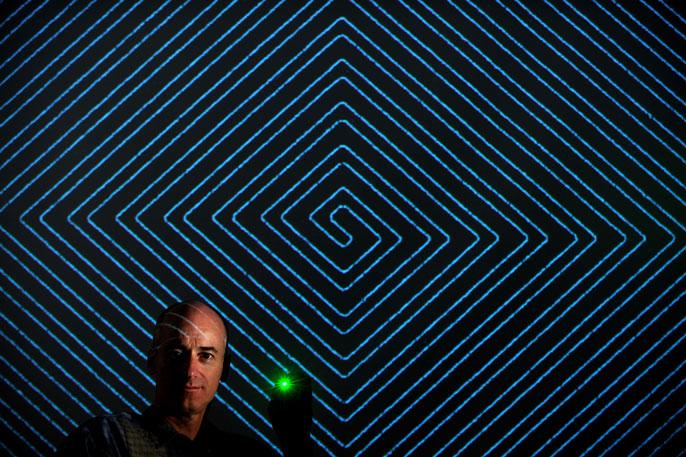Ding ding ding. Another fighter enters the ring. Engineers are hard at work trying to convince the decision makers that there will be something better, more efficient and safer than lithium-ion for batteries. Even though half of our smart devices these days are powered by lithium-ion. However, engineers will keep trying to find the next best thing.

Credit: Daniel A. Anderson/UC Irvine
Researchers at the University of California, Irvine have manufactured what they claim to be a 'nanowire-based' battery material that would survive "hundreds of thousands" of charges. Lithium-ion, as we know it in our smartphones, has a charge-life of around three years. If these engineers could introduce something that extended a device's life for more than three years, then it might actually be commercially viable. The team says the benefit of these batteries could stretch to the level of cars and spacecraft as well.
The project to create the battery material was in collaboration with Nanostructures for Electrical Energy Storage Energy Frontier Research Center at the University of Maryland. The result was an actual working battery that worked with 'conductive filaments' that transported electrons like a normal battery would. However, according to YahooTech, the breakthrough was the nanowires which allowed the UC team's prototype's filaments to sustain 200,000 recharging cycles. The average lithium-ion battery can do 5,000 to 7,000 battery cycles.
The breakthrough is particularly impressive because nanowires are a thousand times thinner than a single human hair. What the team did to strengthen the nanowire was to dip a gold nanowire in a manganese dioxide shell, then covered it in an electrolyte that resembled a "Plexiglas-like" gel. The team says this ensures that the nanowire cannot crack like lithium-ion batteries nanowires do.
The results of the tests that proved the battery can do 200,000 recharges was published in the American Chemical Society's Energy Letters.
One of the authors, Reginal Penner, said: "Mya [one of the lead researchers from UC Irvine] was playing around, and she coated this whole thing with a very thin gel layer and started to cycle it. She discovered that just by using this gel, she could cycle it hundreds of thousands of times without losing any capacity...That was crazy."
Whether or not this technology finds its way into batteries of the future, or can somehow be integrated with lithium-ion, it remains a breakthrough for the future of batteries.
Source: University of California
